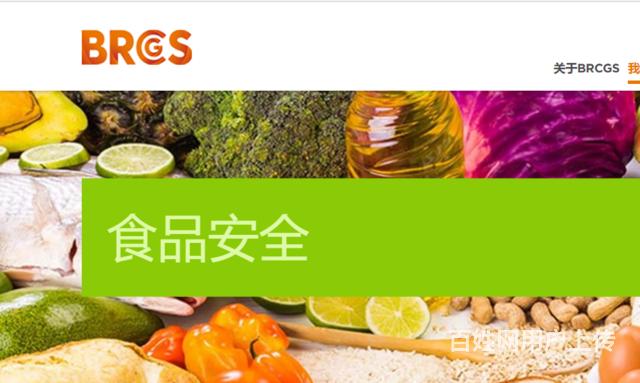概述
全球食品安全标准由零售商,制造商和食品服务?组织的食品行业专家制定,以确保其严格,详细且易于理解。
《食品安全标准》于1998年首次发布,目前已出版第八期,在全球范围内得到了广泛认可。它是根据许多 的全球规范制定者的意见而演变而来的。
它提供了一个框架,用于管理食品和食品成分制造,加工和包装行业中产品安全性,完整性,合法性和质量以及这些标准的操作控制。
该标准侧重于:
鼓励发展产品安全文化;
扩大对环境监测的要求,以反映该技术的重要性;
鼓励场所进一步发展安全和粮食防御系统;
增加对高风险,高关注度和周围高关注度生产风险区的要求;
为生产宠物食品的...
更多概述
全球食品安全标准由零售商,制造商和食品服务?组织的食品行业专家制定,以确保其严格,详细且易于理解。
《食品安全标准》于1998年首次发布,目前已出版第八期,在全球范围内得到了广泛认可。它是根据许多 的全球规范制定者的意见而演变而来的。
它提供了一个框架,用于管理食品和食品成分制造,加工和包装行业中产品安全性,完整性,合法性和质量以及这些标准的操作控制。
该标准侧重于:
鼓励发展产品安全文化;
扩大对环境监测的要求,以反映该技术的重要性;
鼓励场所进一步发展安全和粮食防御系统;
增加对高风险,高关注度和周围高关注度生产风险区的要求;
为生产宠物食品的场所提供更大的清晰度;和
确保全球适用性并成为全球食品安全倡议(GFSI)的基准。
该标准的第8期分为九个部分:
1.高级管理承诺
在良好的食品安全文化的发展中,高层的承诺是至关重要的,因此,对于任何食品安全体系而言,确保有效和确保充分应用和持续发展这些体系都是必不可少的。
2.食品安全计划-HACCP
有效的危害和风险分析使公司能够识别和管理那些可能对其产品的安全性,质量和完整性构成风险的危害。该标准要求根据国际公认的食品法典系统的要求,制定有效的危害分析和关键控制点(HACCP)计划。
3.食品安全质量管理体系
本部分确保公司致力于有据可查的,系统的管理系统,这些系统构成了生产安全产品,满足客户期望并确保员工接受培训所需的产品和过程控制的基础。
4.场地标准
这涵盖了场地的适用性,整洁性和控制性,并包括工厂条件,清洁,设备,虫害控制,异物控制和食品防卫/场地安全等主题。
5.产品控制
建立诸如过敏原管理,预防食品欺诈和产品检测等产品控制对于可靠地交付安全,可靠的产品至关重要。
6.过程控制
这些要求确保了成文的HACCP计划每天生效,并带有有效的程序来始终如一地制造出正确质量的产品。
7.人员
本节介绍了培训,防护服和卫生习惯。
8.高风险,高护理和环境高护理生产风险区
该标准的特定部分涉及容易受到潜在病原体污染的产品,因此需要其他控制措施以确保产品安全。
9.交易产品的要求
本标准的自愿性附加部分,用于购买和出售通常属于本标准范围内并存储在现场设施中但未在审核现场生产,进一步加工或包装的食品的现场。
The Global Standard for Food Safety is developed by food industry experts from retailers, manufacturers and food service organisations to ensure it is rigorous and detailed, yet easy to understand.
First published in 1998, the Food Safety Standard is now in its eighth issue and is well-established globally. It has evolved with input from many leading global specifiers.
It provides a framework to manage product safety, integrity, legality and quality, and the operational controls for these criteria in the food and food ingredient manufacturing, processing and packing industry.
The Standard focuses on:
encouraging development of product safety culture;
expanding the requirements for environmental monitoring to reflect the increasing importance of this technique;
encouraging sites to further develop systems for security and food defence;
adding clarity to the requirements for high-risk, high-care and ambient high-care production risk zones;
providing greater clarity for sites manufacturing pet food; and
ensuring global applicability and bench-marking to the Global Food Safety Initiative (GFSI).
Issue 8 of the Standard is divided into nine sections:
1. Senior Management Commitment
Commitment at a senior level is essential in the development of a good food safety culture and is therefore necessary for any food safety system to be effective and to ensure the full application and continual development of these systems.
2. The Food Safety Plan - HACCP
Effective hazard and risk analysis enables the company to identify and manage those hazards that may pose a risk to the safety, quality and integrity of their products. The Standard requires the development of an effective hazard analysis and critical control point (HACCP) programme based on the requirements of the internationally recognised Codex Alimentarius system.
3. Food Safety and Quality Management System
This section ensures the company works to well-documented, systematic management systems that form the basis for the product and process controls necessary to produce safe products, meet customer expectations and ensure staff are trained.
4. Site Standards
This covers the suitability, cleanliness and control of the site and includes topics such as factory conditions, cleaning, equipment, pest control, foreign body controls and food defence/site security.
5. Product Control
Establishing product controls such as allergen management, the prevention of food fraud and product testing are important in the reliable delivery of safe, authentic products.
6. Process Control
These requirements ensure that the documented HACCP plan is put into operation on a daily basis, together with effective procedures to consistently manufacture the product to the correct quality.
7. Personnel
Training, protective clothing and hygiene practices are covered in this section.
8. High-Risk, High-Care and Ambient High-Care Production Risk Zones
A specific section of the Standard dealing with products that are susceptible to potential pathogen contamination and therefore need additional controls to ensure product safety.
9. Requirements for Traded Products
A voluntary additional section of the Standard for sites that purchase and sell food products that would normally fall within the scope of the Standard and are stored at the site’s facilities, but which are not manufactured, further processed or packed at the site being audited




